
Guests
- Philippe Sandsinternational lawyer at the firm Matrix Chambers and a professor at University College London. His article “The Green Light” appears in the new issue of Vanity Fair. He is the author of the forthcoming book The Torture Team: Rumsfeld’s Memo and the Betrayal of American Values. His last book was titled Lawless World: America and the Making and Breaking of Global Rules.
A new exposé in Vanity Fair by British attorney Philippe Sands reveals new details about how attorney John Yoo and other high-ranking administration lawyers helped design and implement the interrogation policies seen at Guantanamo, Abu Ghraib and secret CIA prisons. According to Vanity Fair, then-White House counsel Alberto Gonzales and other top officials personally visited Guantanamo in 2002, discussed interrogation techniques and witnessed interrogations. Sands joins us in our firehouse studio. [includes rush transcript]
Transcript
JUAN GONZALEZ: The Bush administration’s treatment of prisoners and interrogation methods is coming under increased scrutiny this week following the declassification of a 2003 memo. The memo shows the Justice Department told the Pentagon that presidential authority overrode numerous laws banning torture or cruel treatment of prisoners in US custody. The memo endorsed assault, maiming and even administering mind-altering drugs on prisoners.
The memo was written on March 14, 2003 by attorney John Yoo. At the time, Yoo was a deputy in the Department of Justice’s Office of Legal Counsel. Today, Yoo is a law professor at the University of California, Berkeley.
Meanwhile, the British attorney Philippe Sands has just published an article in Vanity Fair exposing new details about how Yoo and other high-ranking administration attorneys helped design and implement the interrogation policies seen at Guantanamo, Abu Ghraib and secret CIA prisons.
According to Vanity Fair, then-White House counsel Alberto Gonzales personally visited Guantanamo in 2002, discussed interrogation techniques and witnessed interrogations. Also on the trip was David Addington, then Dick Cheney’s chief counsel, and William Haynes, the general counsel of the Department of Defense.
AMY GOODMAN: Alberto Gonzales, Haynes and Addington and Yoo made up what Sands describes as Bush’s “torture team of lawyers.” Sands argues the actions of these lawyers might have amounted to war crimes and could result in their prosecution overseas.
Philippe Sands joins us in the firehouse studio, international lawyer at the firm Matrix Chambers and a professor at University College London. He is the author of the forthcoming book The Torture Team: Rumsfeld’s Memo and The Betrayal of American Values. His last book was called Lawless World: America and the Making and Breaking of Global Rules.
Welcome to Democracy Now!
PHILIPPE SANDS: Very nice to be with you, Amy.
AMY GOODMAN: Talk about your major finding.
PHILIPPE SANDS: Well, I adopted a different approach from the last book: I didn’t deal with documents; I dealt with people. I spent about a year and a half tracing all of the individuals who had been involved in the signing of a single memo by Donald Rumsfeld, which authorized the interrogation by harsh methods of a single man at Guantanamo, a man called Mohammed al-Qahtani. And I traced the story of that memo through the lawyers and the other individuals. And so, I think I got to the heart of what had happened.
AMY GOODMAN: Tell us that story.
PHILIPPE SANDS: Well, I think that the administration’s narrative has always been they really didn’t authorize these things; what happened was it started on the ground at Guantanamo, they faced a situation with individuals who they thought presented a threat to US security, and from the ground, from the people at Guantanamo, new security, new interrogation measures were requested. And so, it’s a bottom-up theory that the administration has always pushed.
What of course emerged, as many I think suspected, is that that’s not an accurate narrative. It in fact came from the top down, and there was a small group of lawyers coalescing around the President, around the Vice President, around the Secretary of Defense, Mr. Rumsfeld, who basically drove the whole thing through.
JUAN GONZALEZ: And this — the role of John Yoo, again, who is increasingly appearing in many reports over the last few years as at least the paper author of so much of this validation of these policies, his role in particular?
PHILIPPE SANDS: Well, he was basically their gopher. I don’t think he was the driving force. I don’t think he was the intellectual brains pushing pressure on people down at Guantanamo. That came from the more senior lawyers. But he was the convenient ideologue, if you like, who was there able to sign on the dotted line and authorize things that others certainly would not have authorized.
And I think the most significant aspect is that this new memo that has come out mirrors an earlier memo that he wrote that was issued in the name of his boss, Jay Bybee on the 1st of August, 2002. The administration has always said that that memo of the 1st of August, 2002, had nothing to do with policies actually adopted by the administration at Guantanamo, and I think I’ve blown that argument out of the water.
AMY GOODMAN: We know about the memo to the CIA, then this memo to the military, to the Pentagon, that says that they do not have to abide by — well, why don’t you tell us what that memo says?
PHILIPPE SANDS: Well, I think the starting memo — there are two memos on the 1st of August, 2002. One has been made public; one has never been made public, which deals with individual techniques of interrogation. That memo was, it turns out, the basis for a decision by Mr. Rumsfeld on the 2nd of December, 2002, to authorize new techniques of interrogation on one detainee at Guantanamo. The administration has always said there was no connection between Mr. Rumsfeld’s decision in December and the earlier memo of John Yoo and Jay Bybee. What transpires is that Mr. Rumsfeld’s lawyer, who goes by the name of Jim Haynes, in fact knew the contents of the earlier Yoo memo and was able, in effect, to rely on it when advising Mr. Rumsfeld. So the idea that somehow this came from the bottom, from a lawyer like Diane Beaver or the camp commander at Guantanamo, unsupported by the Justice Department, is, I think, wrong.
JUAN GONZALEZ: And in your article, you talk about one of the — the memo that approves fifteen of eighteen possible methods, that is personally signed by Rumsfeld, and even adds a few editorial comments in the process. Could you talk about that?
PHILIPPE SANDS: Yeah. It’s become a very famous, or infamous, memo. It’s the one where he writes at the bottom, “Why is standing limited to four hours? I stand for eight to ten hours a day.” And he approves fifteen techniques of interrogation and then leaves open three other techniques, including waterboarding. Those techniques were used over a period of fifty-four days on al-Qahtani at Guantanamo, until one of Jim Haynes’s colleagues, Alberto Mora, who was the general counsel for the Navy, stepped in and said this cannot go on. And the order was then rescinded, but not before, I think, he had been abused and almost certainly also tortured. So it was a memo that had a direct effect, and it was a memo that was completely contrary to the United States’s international obligations to the Geneva Conventions and to the Convention Against Torture.
JUAN GONZALEZ: And Alberto Gonzales’s trip to Guantanamo, could you talk about that?
PHILIPPE SANDS: Well, I’ve spoken for the first time, or at least people I’ve spoken with have for the first time now become publicly identified as closely involved. Diane Beaver was the lawyer down at Guantanamo. Mike Dunlavey was her boss. General Hill was the commander of United States SouthCom based at Miami. I’ve spoken to all three of them, and both Diane Beaver and Mike Dunlavey, who have largely been scapegoated by the administration, described to me the visit that Mr. Gonzales made, accompanied by Mr. Addington, who’s Vice President Cheney’s lawyer, and Jim Haynes, who is Rumsfeld’s lawyer.
They came down. They talked about interrogation techniques. They apparently even watched an interrogation or two. I was told that the driving individual was Mr. Addington, who was obviously the man in control. And I was told in particular by Diane Beaver that she was quite fearful of Mr. Haynes, and she also shared with me that Alberto Gonzales was rather quiet.
AMY GOODMAN: We’re talking to Philippe Sands. His book is called The Torture Team. It’s coming out in a few weeks. His piece in Vanity Fair is called “The Green Light.” Can you talk about 24, the TV show?
PHILIPPE SANDS: I can. I can also reveal an embarrassment, which is that when I was interviewing Diane Beaver, she — and I wasn’t recording it; I was taking handwritten notes — I wrote down very quickly “24 Becker.” And then when I got back to my hotel room and typed up the notes, it didn’t ring any bells for me, so I typed it out, I typed it into Google, and it came up with “24 — do you mean ‘24 Bauer’?” So I typed yes, I went and followed it, and of course that opened the door to something that came completely unexpectedly, that the individuals down at Guantanamo were watching and were being influenced by the film program — the TV program 24.
I went back. I spoke with others, including Diane Beaver again and Mike Dunlavey, and went into great detail. And it turns out, as she described it to me, the TV program 24 had many friends down at Guantanamo. And the timing is fascinating. The abusive interrogations started in November 2002, just three weeks after the start of the second series of 24. And it seems that there was a direct connection between that program and the creating of an environment in which individuals felt it was permissible to push the envelope, as it was put to me.
AMY GOODMAN: And what did the lawyers say about 24?
PHILIPPE SANDS: Diane Beaver no longer feels able to watch 24. I mean, she told me she recognizes now that this is extremely problematic, but that 24 was being broadcast into Guantanamo by cable television. The first series ran throughout 2002, and they were active viewers. It was an extremely popular program.
AMY GOODMAN: So, would you like to reveal your encounter yesterday?
PHILIPPE SANDS: Well, I had a rather curious day. I’m a great soccer fan, and my team was playing in a big football match, and I was in a bar on 38th Street. And astonishingly, as Arsenal scored a goal and went one-nil up, my — I missed the goal, because someone walked in front of me. A few moments later, the person that I was with, who is one of my colleagues from Vanity Fair, said, “Do you realize who that was?” I said, “No idea.” He said, “It was Kiefer Sutherland from 24.” So there was this rather curious moment of finding myself, having written an article about 24, with one of its protagonists watching a soccer match.
JUAN GONZALEZ: In the article, you have some harrowing descriptions of the actual interrogations that were being conducted of a particular detainee there and the records that were being kept of his reaction to the interrogation, as you explore the definition of torture, both in terms of medical or legally.
PHILIPPE SANDS: It’s a really important point. I mean, I’m a lawyer. It’s not for me to determine what is and is not torture. It’s a mix of factual issues, of legal issues, of medical issues. So what I did was I went and identified some completely independent clinical psychologists and clinical psychiatrists, spoke with them. One in particular, Dr. Abigail Seltzer, who’s a British National Health Service doctor, deals with trauma patients. I gave her the interrogation log of Mohammed al-Qahtani. She spent a week with it.
She came back, and she had marked it up in various colors. And what she was looking for — I gave her the definition of torture in international law: severe mental or physical pain or suffering. She went through the torture log, and she marked it up with different colored pens, and she came back with this sort of multicolored version of the document that I had given her. And in blue, she marked indicators of distress, and the document was absolutely chock-a-block full with what she called indicators of distress.
And I said, “Well, is it torture? What do you think?” She was very careful, she was very prudent. She said, “Well, I would obviously need to examine the guy. I’d need to talk to him to form a view. But frankly, if you were to take twelve commissions and put them in a room and ask them, ‘Was this guy tortured?,’ they would all say yes.”
AMY GOODMAN: Can you talk about Douglas Feith, who he was, his significance, your extended interview with him in Washington?
PHILIPPE SANDS: I can talk to him. He — it’s one of the great things about America — my own country is not so open — but you can just get in touch with people, call them up, email them, find their spouses and partners, and say, “Can I come and talk to you?” And Mr. Feith said yes. And I’m very grateful to him for that.
He’s a rather flamboyant character. Someone described him to me as a sort of an Energizer bunny. He likes to speak. He’s got a rather big opinion of himself and the role that he played. He talked rather frankly, I think probably too frankly, about his role in all of this. And in particular, he had an absolutely crucial role in being the person who drafted the memo for President Bush, which caused the Geneva Conventions to be, if you like, suspended from application at Guantanamo.
On the 7th of February, 2002, President Bush adopted the decision that none of the detainees at Guantanamo would be able to rely on any protections under the Geneva Conventions, including the prohibition against cruel, inhuman, degrading treatment or torture. And Doug Feith described to me how he and General Myers worked together, and that he, in particular, took the steps to ensure that none of these detainees could rely on Geneva. And I put it to him, “Isn’t the consequence of getting rid of Geneva that there’s essentially a blank page? All the constraints on abusive interrogation are gone.” And his response was, “That was precisely the point.” And I thought that was rather telling, because the administration has never owned up to the fact that the reason they dis-applied Geneva was precisely to open the door to aggressive interrogation.
AMY GOODMAN: He was Under Secretary of Defense. Now, he —-
PHILIPPE SANDS: Well, he was Under Secretary of Defense in charge of policy. So here I am talking to the guy who’s responsible for US policy on treatment of detainees. And I put it to him, “Did it never occur to you that by opening the door to this type of interrogation, you would expose American soldiers or Americans to the same sort of treatment?” And he really just didn’t -— he basically said, “We never really thought through all of these issues.” It was rather shocking.
JUAN GONZALEZ: And the role of Dick Cheney in all of this, in your research and interviews with the various principals that were involved?
PHILIPPE SANDS: Well, if he had a role — and it’s pretty sure or clear that he did, because he’s — the famous dunk in the water quotation, he’s got no objection to waterboarding, it seems, if it’s going to produce results under certain circumstances. His man was a guy called David Addington. I didn’t meet Addington; he doesn’t give interviews. I met his protege, Jim Haynes, with whom he worked very, very closely. Addington was plainly the man who was driving the issues forward. And one assumes he wasn’t doing it on his own behalf, but on behalf of his boss, who is the Vice President. Diane Beaver described to me, you know, that she was fearful of this man. He has a big powerful man, a booming voice, a big beard that he had. And he was obviously the man in charge. And it is plain from a lot of accounts that I’ve got from people who dealt with him directly, who were bullied by him, that he was the driving force.
He has no — I mean, frankly, it’s a combination of ideology and incompetence. These people were driven by an ideology of getting rid of rules that constrained the freedom to interrogate aggressively and incompetence, not thinking through whether or not these interrogations would have consequences for the United States. But most significantly of all — and this, in a sense, isn’t in the Vanity Fair piece but will come out in the book when it’s published in three weeks — they didn’t get anything out of this guy. It was a hopeless exercise.
AMY GOODMAN: Philippe Sands, the memo that came out this week that endorsed assault, maiming, even administering mind-altering drugs, the document suggests US interrogators would be immune from prosecution for any crime because of the President’s wartime authority. What about the possibility of war crimes being filed against the highest levels of the Bush administration, and how high would those levels go?
PHILIPPE SANDS: Well, that argument is complete rubbish. When you violate an international criminal law, like the Geneva Convention or the Convention Against Torture, you expose yourself to the risk of criminal investigation or prosecution. That was dealt with by US federal law. In June 2006, the Supreme Court gave a judgment in a very famous, very important case called Hamdan v. Rumsfeld, and they said the administration got it wrong. The administration, by deciding that no detainees had rights under Geneva, had violated US constitutional law.
Justice Anthony Kennedy put in a separate opinion. He was with the majority. And he opened the door to war crimes possibilities. He said this means that war crimes violations may well be investigated in relation to situations in which the Geneva Convention was not followed. The administration recognized the threat that it faced, and within three months it had adopted legislation in the Military Commissions Act which created an immunity for any person who was involved in the interrogation of al-Qahtani, as well as many other people. That immunity applies within the United States.
But, as I write in the article in Vanity Fair, it doesn’t go beyond the United States. And I describe in the Vanity Fair piece, in much more detail than in the book, the meetings I’ve had with a European judge and a European prosecutor, who basically said the fact that the US has created a domestic immunity significantly increases the prospects of international investigational prosecution, if any of these people set foot out of the country. And as the prosecutor said to me, that was a very stupid thing to do, to create an immunity.
JUAN GONZALEZ: So, in essence, your sense is that it’s a very real possibility that in the future some of the individuals involved could be exposed, at least in foreign countries, to prosecution for their acts?
PHILIPPE SANDS: I think it’s a real possibility. The judge and the prosecutor have asked me for all of my materials. They were not aware of the details. They were not aware of the immunity that had been granted. And I think what it does do, at the very least, is expose some of these individuals, including the lawyers who form part of what I’ve called the torture team, to the possibility of investigation, if they set foot — well, they’re going to be investigated irrespective of whether or not they set foot outside of the United States — the possibility of the tap on the shoulder, what happened to Senator Pinochet when he was in London, I think becomes a real risk in relation to some of the individuals at the top.
AMY GOODMAN: Nazi attorneys — Nazi attorneys being tried for war crimes?
PHILIPPE SANDS: Well, this is a delicate issue. I obviously went back to examples. I wanted to find examples in which lawyers had been prosecuted for international crimes for carrying out their professional activity of being a lawyer. There’s really only one case that deals with that, and it’s a case called The United States v. Altstoetter
. And ironically, it’s a case that was prosecuted by the United States, by the US military, which, I have to say, comes out of my investigation squeaky clean. I’ve been bowled over by the integrity, the professionalism, the decency of the career military lawyers. But in the case of Altstoetter, he and eleven other lawyers in Germany in the 1930s and 1940s were indicted. Altstoetter spent five years in prison for essentially knowledge of criminal acts of a criminal organization of which he was a member, the SS.
I’m not for a moment drawing the analogy between President Bush and Hitler or anybody else like that, nor am I saying the United States is Germany in that period. I’m interested in the analogy of principle. When does a lawyer cross a line? When does a lawyer do something? When a lawyer invokes an example of national security, as Jim Haynes did, to override a clear obligation under the Geneva Conventions not to torture someone, not to abuse someone, they have taken themselves, on the principle established by the US military in Altstoetter, into the territory of criminality. And the arguments made by Mr. Altstoetter and Mr. Haynes, in a sense invoking national security to justify the unjustifiable, are analogous.
AMY GOODMAN: Philippe Sands, I want to thank you very much for being with us. His piece is in the latest issue of Vanity Fair, called “The Green Light.” His book on the same subject is coming out in just a few weeks, called The Torture Team.

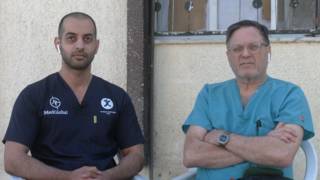
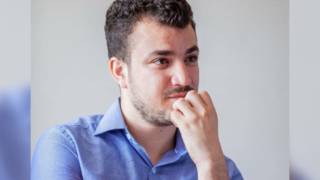
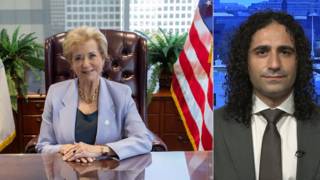
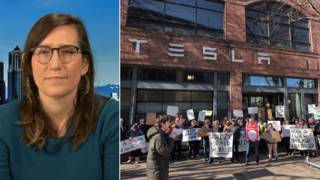
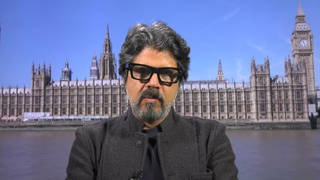
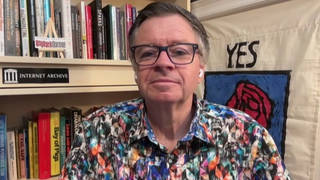
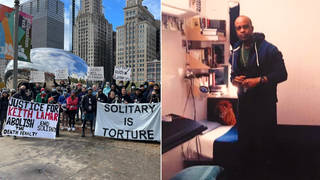




Media Options